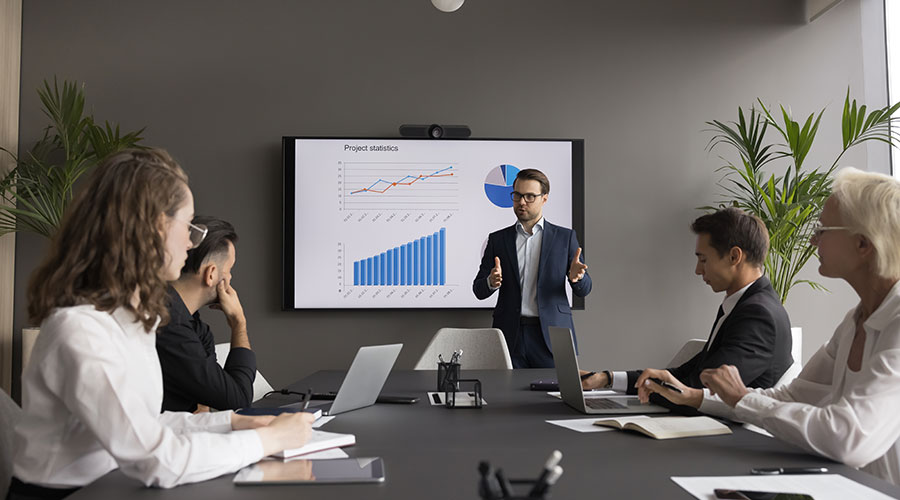Vandalism: Preventing the Writing on the Wall
Managers take advantage of advances in products and technology to keep facilities from being damaged and defaced
Whether the facilities they oversee are in large cities or small towns, maintenance managers with most organizations must deal with vandalism. Facilities open to the public, such as schools and municipal buildings, are among the most common targets. Keeping one step ahead of vandals often becomes a daily challenge.
“Whenever vandals figure out a way to beat our system, our staff sits down and tries to figure out a way to change it,” says Stanley LaFave, facility maintenance supervisor for the City of Sioux City, Iowa. In most cases, success in this cat-and-mouse game involves combination of persistence and common sense.
Restrooms as Targets
While vandalism can occur nearly anywhere in a facility, restrooms in particular provide an array of opportunities to cause destruction. They feature doors to kick, partitions and fixtures to hang from, walls to cover with graffiti, drains to clog, and soap and paper dispensers to knock off walls. The challenge for managers then becomes specifying restroom equipment with vandalism prevention in mind.
LaFave says his organization has taken several steps to prevent vandalism in restrooms, including replacing ceramic sinks and toilets with stainless-steel units in areas where broken fixtures are an ongoing problem.
“Stainless-steel fixtures are a costly investment up front, but they pay for themselves in the long run,” he says. Managers should track how often their workers replace existing fixtures. Then they can compare the labor and equipment costs associated with repairs with the cost of installing stainless-steel fixtures.
Touch-free fixtures also can help reduce vandalism. They use fewer moving parts for users to break. And because the fixtures provide water only when in use, they can deter vandals trying to plug sinks. Besides increasing water waste, overflowing sinks can damage floors, especially if a restroom is located on a building’s upper floors.
“We use a lot of hands-off fixtures in restrooms now for a couple reasons, including vandalism,” says Bob Casagrande, director of plant operations and facility maintenance at Southern Methodist University (SMU) in Dallas, adding that the fixtures also improve hygiene sanitation. Vandalism considerations also are playing a larger role in the specification of soap and paper dispensers.
“We have a variety of soap-dispensing units,” says Dawn Miller, plant operations manager with Minneapolis Public Schools. While disposable soap dispensers might be a better investment for facilities with more vandalism, foam dispensers have worked in some of the district’s schools.
“They’re economical, they work well, and we haven’t had much trouble with them,” she says. Managers also can choose from a wide variety of paper dispensers.
“In the last few weeks, I’ve seen four different styles of paper-towel dispensers,” Miller says. “Some of the new, heavier plastic ones work okay, but they’re not meant to last a lifetime.” Most dispensers, whatever their type, break down from use or vandalism within two years of installation, she says, so she looks for options that would be the most cost-effective with a two-year life cycle.
Flush-mounted paper-towel units also offer vandalism benefits. SMU has installed these types of units at his campus, and Casagrande says vandals haven’t been able to as easily damage such units.
Eyes on the Problem
Since Minneapolis Public Schools installed security cameras, the maintenance staff has had to replace fewer restroom fixtures, Miller says.
The reduction “has a lot to do with the cameras in the hallways,” she says. The cameras are positioned so security personnel can watch individuals enter and exit restrooms. The mere presence of cameras can minimize acts of destruction.
“Students know they are on camera, and they know they are being watched at all times,” Miller says.
Adds LaFave, “It seems that once people notice that they are being watched, it deters the acts of vandalism.” His organization also has installed cameras in high-vandalism areas.
Miller says the school district is installing web-based cameras on the interior and exterior of several of its buildings.
“We started using cameras on a minimal basis, and it seemed to help,” she says. “Now, we’re finding that it is really a good tool to use to help lessen occurrences of vandalism. It has been one of our most successful measures.
The process for installing the cameras is slow and expensive, but many managers say they can be worth the costs and effort if organizations choose to place them in areas where people can see the cameras and the cameras can see them.
“I think the cameras have been heaven sent,” she says. “It has really cut back our maintenance on vandalism-related jobs.” In other cases, however, installing and implementing a camera security system is cost prohibitive.
“It seems now that the vandalism has shifted from where the cameras can see to where we don’t have coverage,” LaFave says. “It is just too costly to monitor everything.”
Adds Miller, “The cameras are a major investment, but (the investment) doesn’t just address a vandalism issue, it addresses an overall safety issue, and it has helped students and staff feel safer.”
Personal safety, not vandalism, prompted SMU to install cameras around its campus, but the cameras also have been useful during cases of vandalism and theft.
“Most of the cameras are not directly monitored, but if we have a car broken into we can go back and look at the video,” Casagrande says. “That has been very helpful.” He doesn’t recommend that managers install fake camera systems to deter vandalism.
Managers at SMU “talked about putting in fake cameras, but they give people a false sense of security because the people think that someone is actually watching them,” he says. “Individuals might feel more secure, but if a crime happened, there would be no tape.”
Early Intervention
Repairing areas damaged by vandals as quickly as possible helps to prevent future destruction.
“The best advice is when you see vandalism or graffiti you need to address it immediately,” LaFave says. “It deters others from participating in such acts.”
Adds Miller, “We consider vandalism as an urgent emergency.” His staff repairs all vandalism within 48 hours.
“Within one business day, we remove all graffiti,” she says. “And if a window is broken, our glazers are on weekend response to fix it instead of putting a big board on it.”
Monitoring patterns of vandalism also can help managers anticipate future events.
For example, “The last week of school is usually a big week for vandalism,” Miller says. Increasing public visibility at facility sites is another step managers can take.
“We added lighting and trimmed the trees and shrubbery in the areas commonly tagged by vandals, so people driving by could see the area better,” Miller says. “We also recently have been able to remove some portable classrooms, which lessens hiding spaces for such activities.”
Managers should check their exterior lighting fixtures to make sure the bulbs and timers are working properly, she says.
Barriers, such as post-and-chain fences and parking-lot gate arms, also can useful to discourage or restrict access to areas.
“About 60-70 percent of our parking lots now have gate arms because we found that they helps to mitigate theft and vandalism,” Casagrande says. “Folks are more likely to go onto a lot that is not gated to break into cars.”
Plants that feature thorns also can discourage individuals from getting too close to buildings.
“We use non-intrusive plants, like hollies and roses, that poke you if you get to close to them,” Casagrande says.
Vandalism is a never-ending battle, but a sound strategy can help managers minimize the destruction and costs.
Says Miller, “I think being proactive, walking around your site, trying to determine what your vandalism areas are and continually assessing your strategy can help reduce your vandalism costs.”
Solution Strategies
Once managers have identified areas in their facilities that are likely targets for vandals, the next step is finding solutions to prevent and minimize damage. Here are products managers have found successful in preventing vandalism:
Thermostat sensor plates. Many organizations have a problem with vandals breaking thermostats off the walls. As a solution, Stanley LaFave, facility maintenance supervisor with the City of Sioux City, Iowa, says his department has installed sensor plates.
“With the sensor plates, there is nothing to destroy,” LaFave says. The sensors are computer-programmed, and LaFave can control them from his office. The sensor plates have been more successful in stopping vandalism occurrences than thermostat guards.
“The guards for the thermostats really don’t help or assist because vandals will just beat them off the wall,” LaFave says. Also, guards don’t really prevent people from changing the thermostat’s set temperature. “They’ll use paper clips or letter openers to turn the thermostats up or down,” he says.
Graffiti-removal products. Managers can choose from a variety of products designed to minimize graffiti damage. Bob Casagrande, director of plant operations and facility maintenance at Southern Methodist University (SMU) in Dallas, says his organization paints a clear, peel-off coating on the exterior of some of its buildings.
“So if they’re painting graffiti, they’re actually painting on the coating that you can peel off,” he says.
Elevator fixtures. Because vandalism often occurs in areas that offer privacy, many organizations find damage in their facility’s elevators.
“In addition to vandal-resistant controls, we put surfaces in elevators that are difficult to scratch, such as stainless-steel panels,” Casagrande says. Managers also might have a problem with individuals stealing light bulbs from elevators. LaFave says he is looking for a light-bulb guard for his facility’s elevators.
“I’m trying to find something that is pleasing to the eye,” he says, adding that finding products that preserve a facility’s inviting, comfortable atmosphere while still protecting assets is an ongoing balancing act that requires persistence and patience.
— Renee L. Shroades
|
Related Topics:











